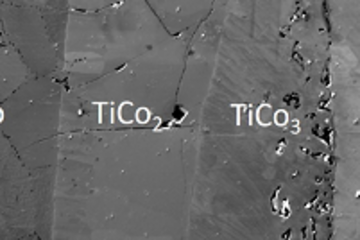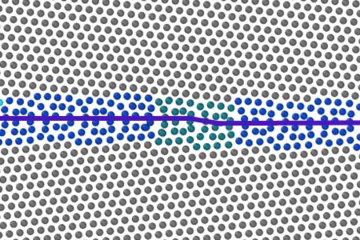All genres
121.
Journal Article
Corrosion properties of chemically modified metal surfaces. Electrochimica Acta 43 (1-2), pp. 165 - 174 (1998)
122.
Journal Article
Influence of Relative Humidity during Film Formation Processes on the Structure of Ultrathin Polymeric Films. Langmuir 14, 23, pp. 6743 - 6748 (1998)
123.
Journal Article
Self – assembling adhesion promoters for corrosion resistant metal polymer interfaces. Progress in Organic Coatings 34 (1-4), pp. 1 - 12 (1998)
124.
Journal Article
Self Assembled Molecular Monolayers on Oxidized Inhomogeneous Aluminum Surfaces. Fresenius Journal of Analytical Chemistry 358 (1-2), p. 108 - 108 (1997)
125.
Journal Article
Electrochemical quartz crystal microbalance in modern corrosion research Study of the pretreatment of galvanized steel. Faraday Discussions 107, pp. 307 - 322 (1997)
126.
Journal Article
Enthaftung organischer Beschichtungen von Metalloberflächen. Farbe & Lack 102, pp. 78 - 84 (1996)
127.
Journal Article
Enthaftung organischer Beschichtungen von Metalloberflächen. Farbe & Lack 11, pp. 84 - 87 (1996)
128.
Journal Article
Formation and Stability of Ultrathin Organosilane Polymers on Iron. Journal of Adhesion Science and Technology 10 (6), 6, pp. 573 - 588 (1996)
129.
Journal Article
Atmospheric Corrosion of Aluminum in the Presence of Ammonium Sulfate Particles. Journal Electrochem. Soc. 143, 4, pp. 1175 - 1182 (1996)
130.
Journal Article
Atmospheric Corrosion of Zinc in the Presence of Ammonium Sulfate Particles. Journal Electrochem. Soc. 143, 5, pp. 1539 - 1546 (1996)
131.
Journal Article
The Scanning Kelvinprobe; a new technique for the in situ analysis of the delamination of organic coatings. Prog. Org. Coat. 27, 1-4, pp. 573 - 588 (1996)
132.
Journal Article
Adsorption of self assembled monolayers of mercaptan on gold. Fresenius' Journal of Analytical Chemistry 353 (3-4), pp. 329 - 332 (1995)
133.
Journal Article
Electroreduction of oxygen on octadecylmercaptan self-assembled monolayers. Fresenius' Journal of Analytical Chemistry 353 (3-4), pp. 316 - 319 (1995)
134.
Journal Article
Adsorption of self-assembled monolayers of mercaptane on gold. Thin Solid Films 264 (2), pp. 240 - 245 (1995)
135.
Journal Article
Investigation of the delamination of polymer films from galvanized steel with the Scanning Kelvinprobe. Fres. J. Anal. Chem. 353, 3-4, pp. 337 - 341 (1995)
136.
Journal Article
Nucleation and Growth of Plasma-Polymerised Hexamethyldisilazane on Iron -Substrates. Ber. Bunsenges. Phys. Chem. 99, 11, pp. 1387 - 1392 (1995)
137.
Journal Article
Dissolution, passivation and composition of passive films in binary iron-nitrogen alloys. Materials Science Forum 185-188, pp. 723 - 730 (1995)
138.
Journal Article
Adsorption and characterization of molecular adhesion promoter monolayers on iron sufaces under UHV conditions. Fres. J. Anal. Chem. 353, 5-8, pp. 657 - 660 (1995)
139.
Journal Article
Mechanism of Atmospheric Corrosion of Copper in the Presence of Submicron Ammonium Sulfate Particles. Journal of the Electrochemical Society 141 (11), pp. 2935 - 2941 (1994)
140.
Journal Article
Structure and Properties of Mercaptan-LB Films Prepared under Electrochemical potential control. Electrochimica Acta 39, 8-9, pp. 1207 - 1214 (1994)











